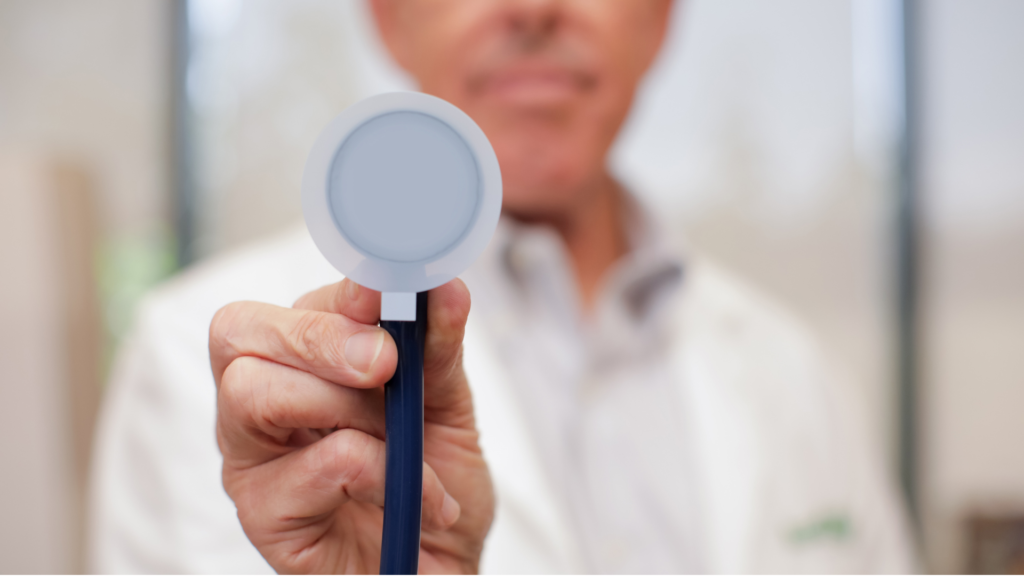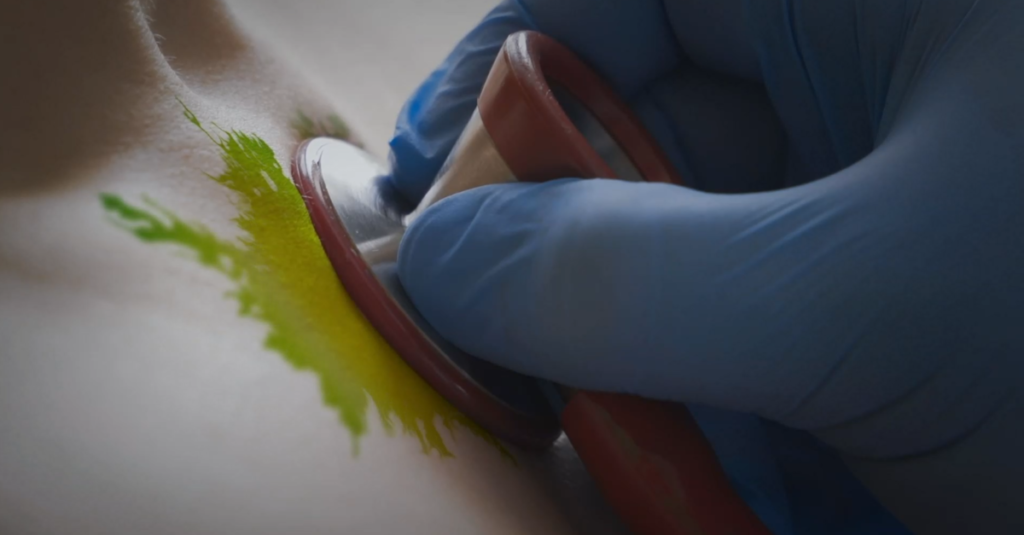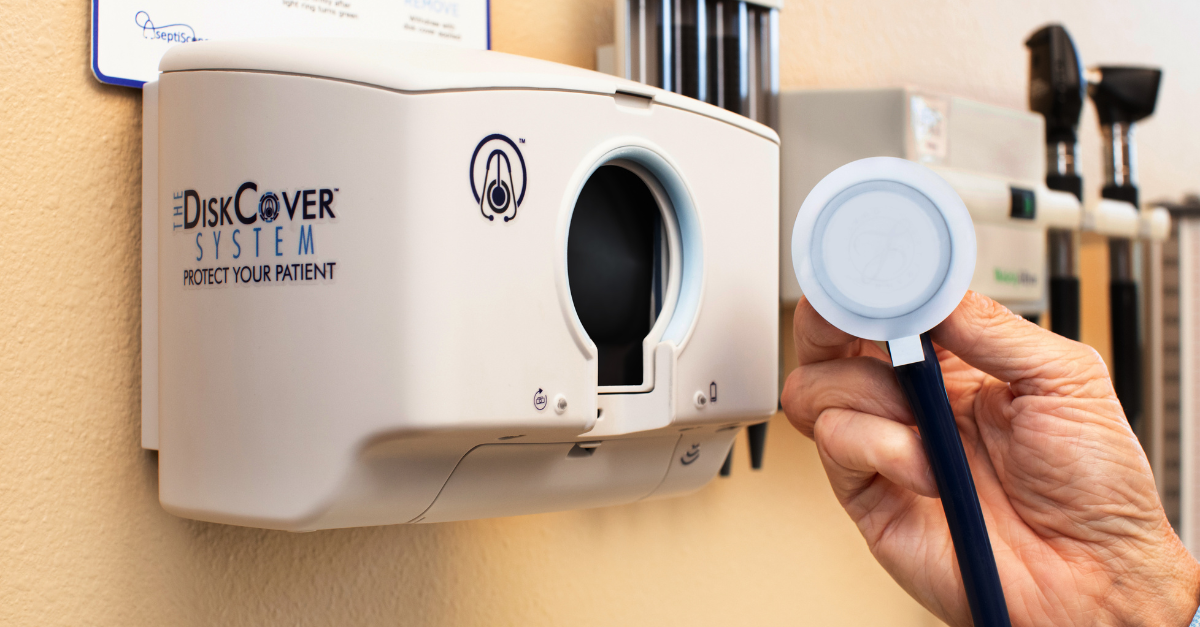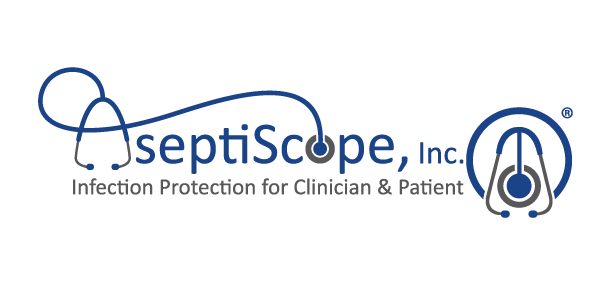
SAN DIEGO, Apr. 3, 2024 – Across time and around the world the symbol of healthcare, the stethoscope, remains the most commonly used medical device. Today’s publication in the Journal of Infection and Public Health¹ issues a clear message to the healthcare community.
“Our stethoscopes are like our third hand, they touch our patients in each assessment, but in the process they spread pathogens just as unwashed hands. The data is consistent and clear on this, and we’ve been ignoring it for too long,” says Dr. Frank Peacock, an emergency physician at Baylor College of Medicine and an author of today’s publication. He and coauthors conducted a review and analysis of research associated with the stethoscope's ability to transmit the pathogens that are of greatest concern – Multi Drug Resistant Organisms (MDROs).
Although stethoscope contamination is not new to the healthcare community, the practice of stethoscope hygiene between patients has not been reinforced. “Even when clinicians do take the time to clean their stethoscopes by wiping it down with alcohol, resistant pathogens such as MRSA and C. diff spores still persist on the stethoscope diaphragm,” says Dr. Abhay Dhand, referring to the part of the stethoscope that touches the patient. Dhand is a coauthor and infectious disease expert at Westchester Medical Center in New York.

On the west coast of the US things are no different; “I’ve conducted these studies myself”, says Alpesh Amin, MD, Professor of Medicine and Hospital Medicine expert at the University of California, Irvine. “Cleaning takes time and technique, it is not consistently done, and it still won’t remove dangerous, resistant pathogens known as MDROs. Over decades now, studies show this as a failed strategy”, Amin stated.
The expert analysis also looked at results for “single-patient stethoscopes” that are disposable tools assigned to one patient. “These blunt tools have not improved patient safety, and most data supports they may do the opposite”, states Cynthia Cadwell, NP, CPHQ, a patients safety expert, and coauthor. “Studies have shown that these poor quality products cause over 10% misdiagnoses, including critical cardiac pathologies like heart murmurs. Most data support that disposable stethoscopes do not prevent transmission, force clinicians to share contaminated earbuds, and contribute to increased material waste. These items have no redeeming value for the patient, the clinician, nor the environment”, concludes Cadwell.
The authors note that several studies in recent years have noted unprecedented blocking of stethoscope transmission using a clean barrier that shields patients during exams, allowing clinicians to use their stethoscopes with no acoustic interference. “Placing a barrier between the stethoscope and the patient ultimately makes stethoscope exams touch-free, essentially placing a clean glove on our third hand”, quips Alpesh Amin, credited for the stethoscope nickname in his 2015 study titled “The Third Hand²”.
Down the road from Dr. Amin, Dr. Francesca Torriani serves as Program Director of Infection Prevention and Clinical Epidemiology at University of California, San Diego Health. She has researched and published on the new, touch-free technology that automatically applies a clean, medical grade barrier on stethoscopes in about a second, immediately prior to the patient exam.
The technology, called The DiskCover System, is now available in the United States, and is gaining popularity. “We are now integrating it into routine use in several units with good reviews”. UC San Diego has installed The DiskCover System in UCSDH units and clinics throughout the city by integrating it into hand hygiene stations. “We have integrated hand hygiene into everything we do, so placing The DiskCover System next to hand hygiene stations, the staff automatically uses it,” Dr. Torriani advised.

A new return-on-investment (ROI) analysis³ shows the touch-free, barrier technology, The DiskCover System, may save hospitals up to $5M annually. In a related move the CDC recently announced their new 2024 Guideline to Prevent Transmission of Pathogens in Healthcare Settings, replacing their antiquated old guidelines. The draft framework, now posted on the CDC website, repositions stethoscopes as vectors that transmit pathogens through touch, and that hygiene should be conducted “prior to use with other patients”, much more aligned with today’s hand hygiene requirements regulated by patient care oversight groups such as The Joint Commission.
The experts’ conclusions are that, based on the data, “the use of a practitioner’s personal stethoscope with a disposable diaphragm barrier should be considered as a significant improvement in patient safety… and considered as a potential new standard for all patient contacts.”
References:
- Stethoscope Barriers Narrative Review; It's Time for a Strategy Unfriendly to Multi-Drug Resistant Organisms (MDROs) - ScienceDirect
- The Third Hand: Low Rates of Stethoscope Hygiene on General Medical Services (mdedge.com)
- Peacock WF. The Hidden Expense of Stethoscope Hygiene vs the Real Costs of Failure. Clin Exp Emerg Med. 2024 Jan 11. doi: 10.15441/ceem.23.161. Epub ahead of print. PMID: 38204157.
